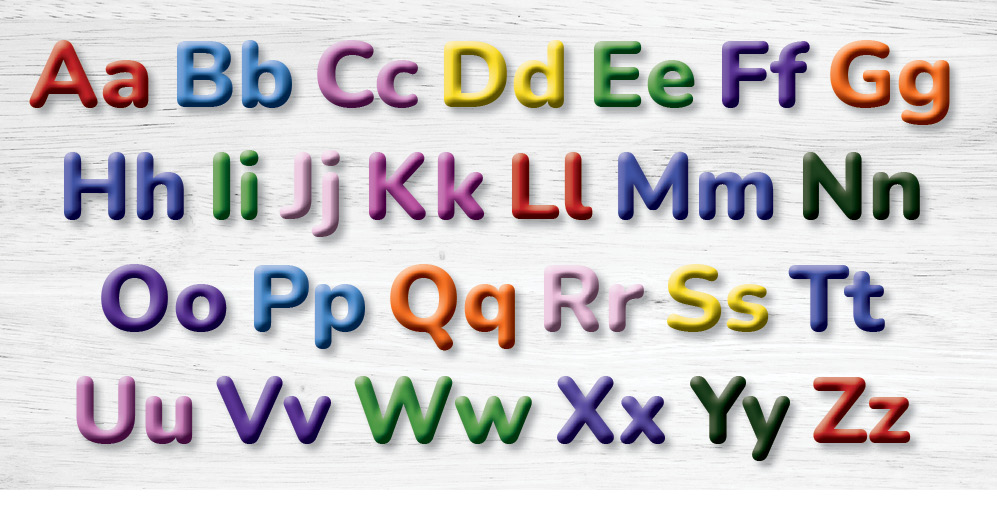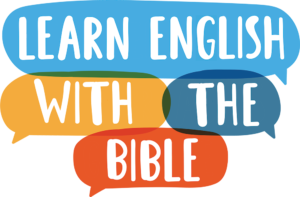
Teaching the English Alphabet
Helping Students Learn to Write in English
This is the second article in our 5-part series about how to teach English spelling. (Click here to read the main article.)
The very first step to reading, writing, and spelling in English is to learn the English letters. Let’s look at several reasons why beginners should learn not only the English letters, but the order in which they appear in the alphabet.
In this article, we’ll look at the following topics:
- A super brief history of the English alphabet
- The need to organize information systems like alphabets
- Help for learners: Developmental progression and chunking
- How to teach the alphabet
A Brief History of the English Alphabet
We can recognize the basic order of today’s alphabet in the very first alphabets, including Egyptian hieroglyphs and the cuneiform Ugaritic script. Ugaritic “letter lists” from the 15th century BC have been found in approximately the same order as the Phoenician alphabet of the first millennium BC.
The Greeks borrowed from the Phoenician alphabet, and the Romans borrowed from the Greek alphabet. Through the centuries, the alphabet evolved into the letter forms and letter order we use in English today. To read more about the history of the alphabet, click here to read a great article from AncientOrigins.net.
Every Information System Needs to Be Organized
Language is a very complicated system that needs rules and order to work. All users of the same system need to know and follow the rules, so that communication can happen.
Even languages that don’t have standard alphabets as we know them, will be indexed by their base characters and the number of strokes it takes to write them, or by the shape of the first stroke. Every information system needs a way to index its contents so that the needed information can be found easily.
Dictionary Order
Having a consistent order to the letters also makes keeping a dictionary of words possible. It would be nearly impossible to look up a word in that huge reference book if you could not predict the order of the letters.
Help For Learners: Developmental Progression
Learning the letters of the alphabet in a standard order also gives learners the ability to build on their knowledge gradually. “Chunking” of letters allows them to learn sections of the alphabet one by one. They can build on that knowledge until they are able to remember the entire sequence.
A Consistent Order Is Easier to Learn
Learning the letters in a standard sequence and using “chunking” to remember that sequence makes memorization easier. Chunking allows students to memorize smaller sections of a larger group. For example, when we need to remember a phone number, it’s usually divided into three sections of numbers, making it easier to remember.
Think of the chunking in the well-known Alphabet Song, sung to the tune of “Twinkle Twinkle Little Star:” Listen to it on YouTube:
The World Without Chunking
Imagine dumping out a set of 26 letter blocks onto the floor one day. The next day, you do it again and the letters are in a different jumble. It would take a long time for students to learn and remember them all.
One notable exception to the practice of learning the alphabet in order is the practice of pulling out the five vowel letters for separate learning. Even then, however, the vowels are kept a chunk, in alphabetical order, for ease of learning – AEIOU.
What's the Best Way to Teach the Alphabet?
Step One: Learn the Names of the Letters in Order
The easiest way to teach the alphabet is to start with saying the names of the letters in order. Write them on the board and sing the Alphabet Song. Do worksheets that require learners to put the letters in order and to recognize the different letter forms. Give them short lists of simple words and ask them to alphabetize them. You will find sample worksheets at the end of this post.
Should I Teach Capital Letters First?
If your students are old enough to read, teach the lower case letters first. These are the letters that they will see most often as they read, and the ones they will use most often as they write. Teach capital letters next, because they will need these for writing. You can play matching games to pair upper case and lower case letters together.
Step Two: Teach Letter Sounds
Once your students know the letters in order, you can begin to teach the sounds of each letter.
Use Developmental Progression to Teach Letter Sounds
You don’t have to teach the sounds in alphabetical order. Use the principle of developmental progression to teach the most common sounds first. For example, students could learn s, t, d, n, and the vowel e. Help them make simple words with these sounds, like den, ten, set, etc. Enjoy their sense of accomplishment as they learn to correctly spell and pronounce English words.
Use Letter Pairs to Teach Pronunciation
It is also helpful to pull out certain groups of letters that make similar sounds and teach them together. For example, pull out T and D and teach the pronunciation of these letters together because they use the same mouth position.
We’ll talk more about how to teach the letter sounds in the next article.
Do I Have to Teach the English Alphabet If My Learners Already Use It?
If your learners’ first language is Korean, or Thai, or any language that does not use the Latin alphabet, you will need to teach the English alphabet. However, no matter what first language your learners have, you will always need to teach the names of the English letters, because they can be different from language to language.
For example, in English we call the letter h “aitch.” In German, that letter is called “ha.” Knowing the names of the letters in English is important, so they can spell their names and participate in classroom spelling work.
The number of letters in each alphabet may also vary from language to language. For example, the Swedish alphabet has 29 letters, and the Italian alphabet has 21 letters.
The Alphabet Is Practical
Having a standardized order for the alphabet makes it easier to teach. The sequence of the alphabet reflects the way it is used in the English language. Learning the alphabet in order helps learners understand how letters are arranged in order in words and sentences to create language.
Letters and sounds are introduced systematically, with repeated practice and building on what students have already learned. This provides a strong foundation for literacy – reading, writing, and spelling.
Alphabet Worksheets
Worksheets like these two samples can help your students learn the alphabet and recognize letter shapes. Use them, then create your own!
Leave a Comment!
Let me know if this article was helpful to you! Do your students have trouble with spelling? Have you wondered about the best way to teach spelling? Share your tips and strategies with other teachers! See you soon in the next article.
